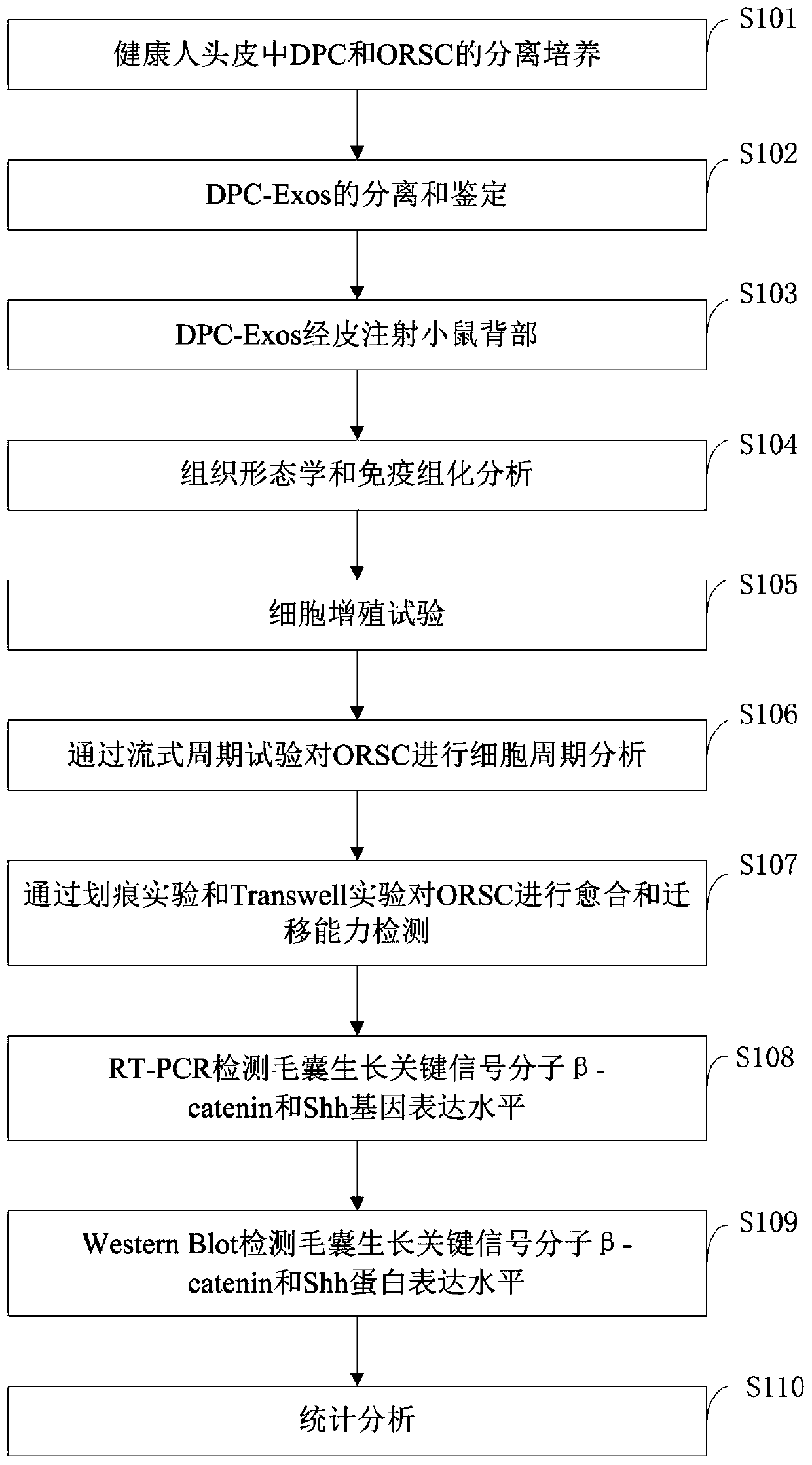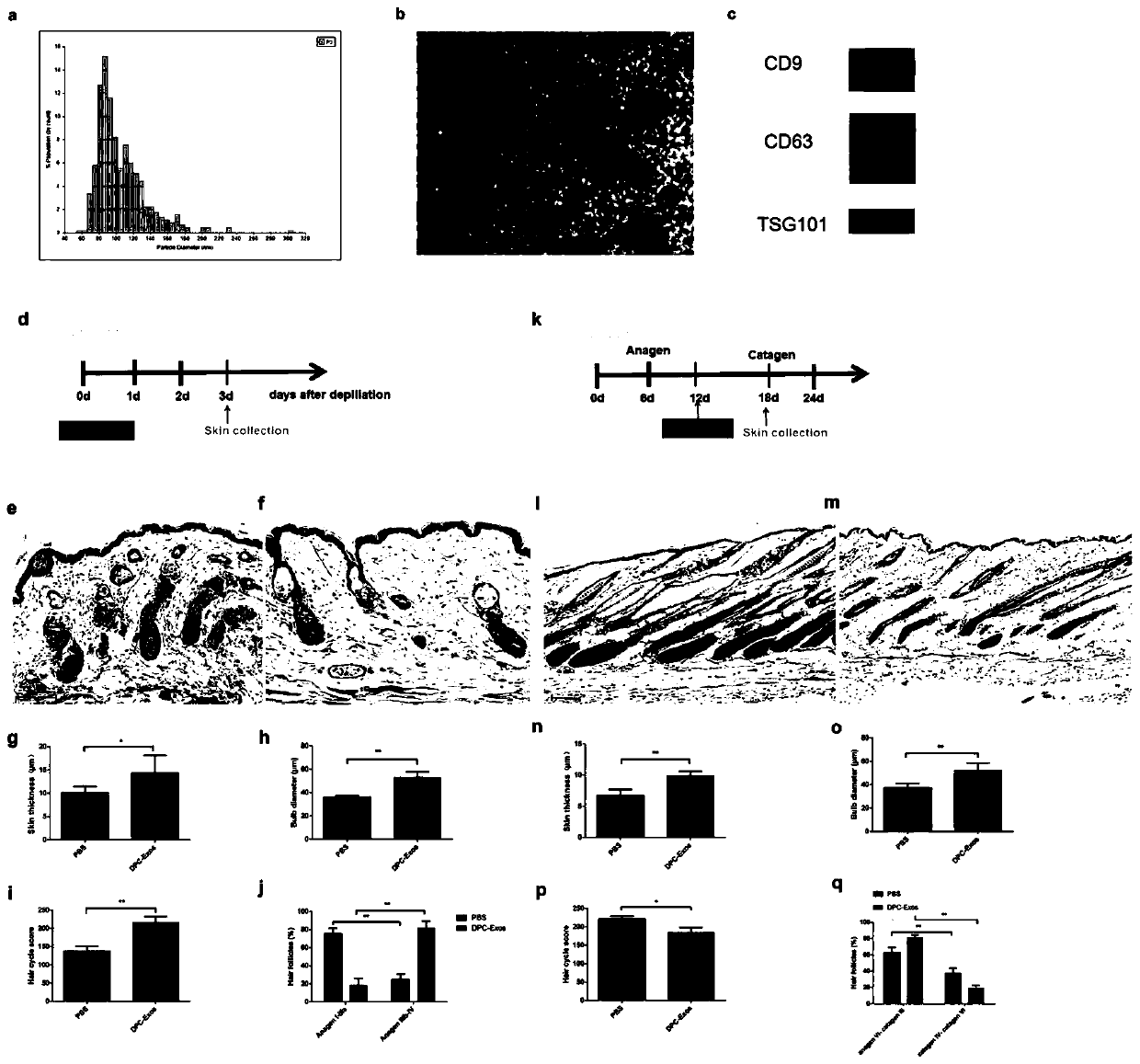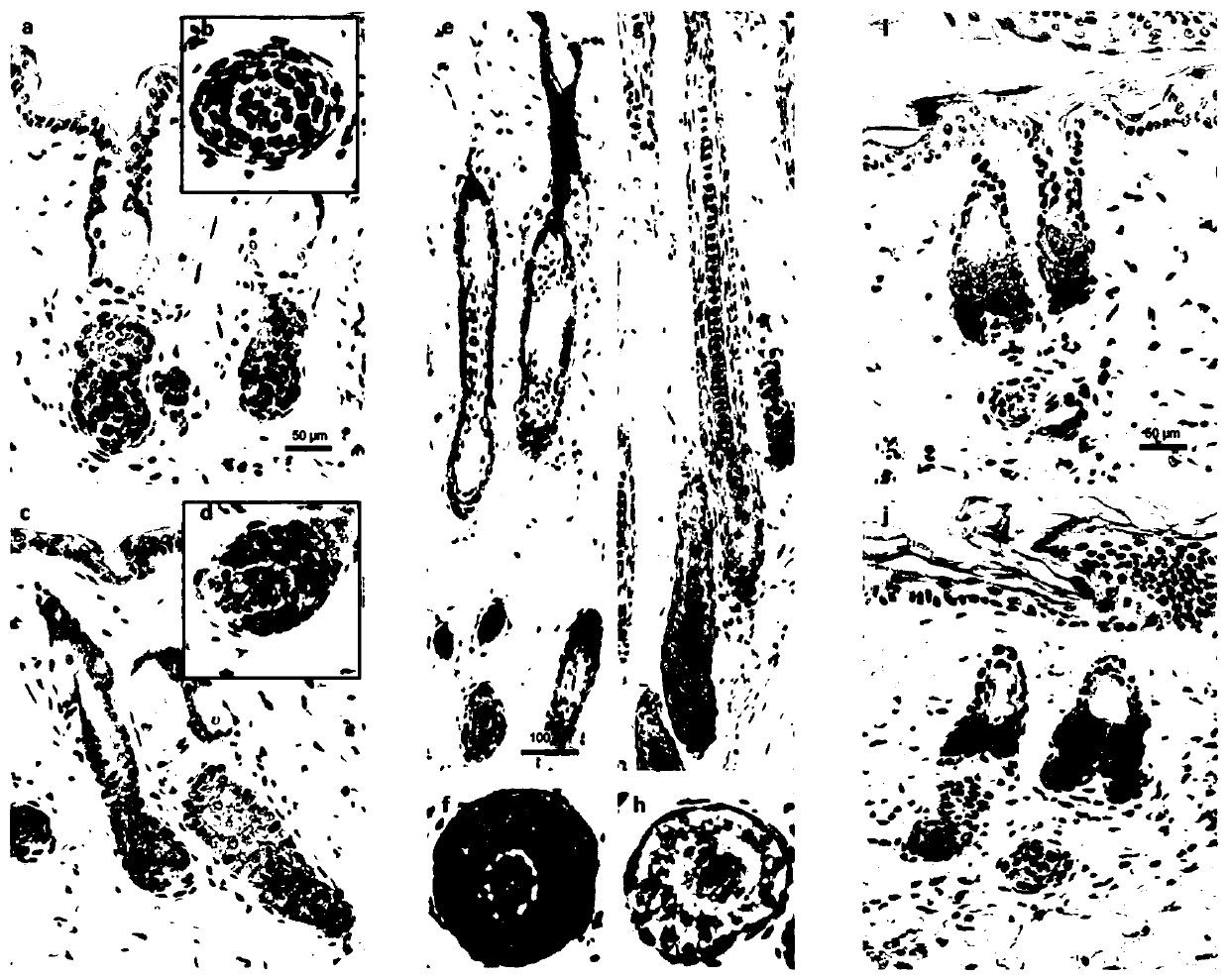Method for extracting exosome derived from human hair follicle dermal papilla cells
A technique for dermal papilla cells and an extraction method, which is applied in the field of exosome extraction derived from human hair follicle dermal papilla cells, can solve the problems that the regulation effect has not been studied, and achieves the effects of enhancing proliferation and migration and delaying degenerative period.
- Summary
- Abstract
- Description
- Claims
- Application Information
AI Technical Summary
Problems solved by technology
Method used
Image
Examples
Embodiment
[0090] 1. Materials and methods
[0091] 1.1. Isolation and culture of DPC and ORSC from healthy human scalp;
[0092] Informedly obtained healthy human scalp specimens from patients without systemic disease undergoing plastic surgery; ORSC and DPC were isolated from scalp HF by a two-step enzymatic digestion method; the scalp was cut along the dermal-epidermal junction and soaked In dispase, overnight at 4°C, pull out the HF and trypsinize for 5-10 minutes; wash the ORSC suspension with pre-cooled PBS after sifting through a filter and centrifuge at 800×g for 5 minutes, then resuspend in complete keratinocytes In cell culture medium (CKSFM); the dermis was digested with collagenase at 37°C for 3-6 hours, washed with PBS through filter sieved DPC and resuspended in DMEM / F-12 (1:1) containing 10% FBS (Hyclone, Logan, UT, USA); ORSC and DPC were transferred to a 25ml culture flask and incubated at 37°C, 5% CO 2 The study protocol was approved by the Institutional Review Board ...
PUM
| Property | Measurement | Unit |
|---|---|---|
| Particle size | aaaaa | aaaaa |
| Diameter | aaaaa | aaaaa |
Abstract
Description
Claims
Application Information
 Login to View More
Login to View More - R&D
- Intellectual Property
- Life Sciences
- Materials
- Tech Scout
- Unparalleled Data Quality
- Higher Quality Content
- 60% Fewer Hallucinations
Browse by: Latest US Patents, China's latest patents, Technical Efficacy Thesaurus, Application Domain, Technology Topic, Popular Technical Reports.
© 2025 PatSnap. All rights reserved.Legal|Privacy policy|Modern Slavery Act Transparency Statement|Sitemap|About US| Contact US: help@patsnap.com



